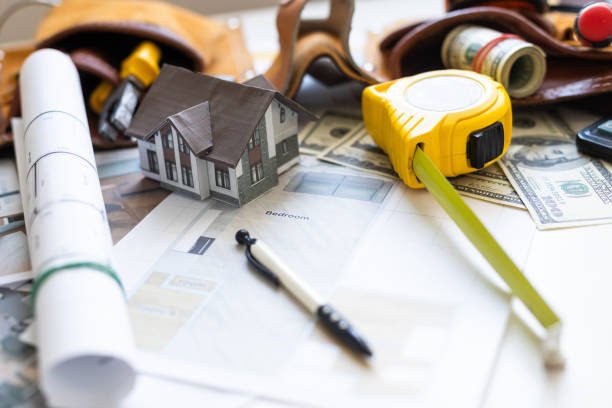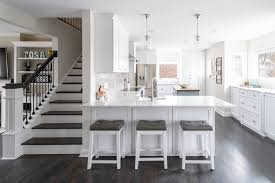Home Improvement Transforming Your Space for Comfort and Value
Home is more than just a place to live—it’s a personal sanctuary. Whether you’re updating an outdated kitchen, creating a functional outdoor space, or upgrading energy efficiency, home improvement projects can dramatically increase comfort, value, and style. In today’s evolving lifestyle, home improvement is not just a trend; it’s a necessity for adapting to modern needs.
This article explores the key aspects of home improvement, including benefits, popular renovation ideas, budgeting tips, and expert insights to help homeowners make informed decisions.
Why Home Improvement Matters
1. Increased Property Value
Home improvement projects significantly increase the market value of a home. According to real estate experts, updated kitchens, modern bathrooms, and energy-efficient systems are among the top renovations that yield high returns on investment. Even small changes, like fresh paint or new lighting, can make a big difference in resale value.
2. Enhanced Comfort and Functionality
Renovations help create a more functional and comfortable living space. As families grow or lifestyle needs change—like working from home or aging in place—home improvements make it easier to adapt. From open floor plans to smart storage solutions, every update can enhance day-to-day living.
3. Energy Efficiency and Sustainability
Energy-efficient upgrades, such as double-glazed windows, solar panels, and smart thermostats, reduce utility bills and carbon footprints. Sustainable materials like bamboo flooring or recycled countertops are not only eco-friendly but also durable and stylish.
4. Personal Style and Satisfaction
A beautifully renovated home reflects the personality and taste of its owner. Whether you prefer a minimalist design, rustic charm, or modern luxury, home improvement allows you to bring your vision to life.
Top Home Improvement Trends
1. Smart Home Integration
The rise of smart technology is transforming homes. Homeowners are installing smart lighting, voice-controlled assistants, security systems, and automated thermostats for convenience, efficiency, and safety.
2. Open-Concept Living Spaces
Knocking down walls to create open-concept spaces continues to be a popular trend. These layouts enhance natural light, improve traffic flow, and make smaller homes feel larger and more connected.
3. Outdoor Living Areas
Decks, patios, and outdoor kitchens are increasingly in demand. People want to enjoy their outdoor spaces year-round, and improvements like pergolas, fire pits, and weather-resistant furniture make that possible.
4. Kitchen and Bathroom Remodels
The kitchen is often called the heart of the home. Upgrading appliances, cabinets, and countertops can instantly modernize the space. Similarly, spa-inspired bathrooms with walk-in showers, freestanding tubs, and heated floors are highly desirable.
5. Home Office Additions
With remote work becoming permanent for many, homeowners are converting spare rooms, basements, or even closets into dedicated home offices with proper lighting, soundproofing, and ergonomic furniture.
Common Home Improvement Mistakes to Avoid
-
Underestimating Costs
Unexpected issues often arise, especially in older homes. Always set aside extra funds and expect minor delays or surprises. -
Ignoring Permits
Failing to secure the right permits can lead to legal issues or complications when selling your home. -
Over-Improving
Making your home the most upgraded one on the block might not pay off. Improvements should match your neighborhood’s market level. -
Following Trends Blindly
Not all trends are timeless. Stick to designs and materials that suit your long-term lifestyle and taste. -
Choosing Cheap Materials
While budget matters, avoid sacrificing quality. Cheap materials may require replacement sooner and cost more in the long run.
Budgeting and Planning Tips
1. Set a Realistic Budget
Before beginning any project, assess your finances. Determine how much you can afford and prioritize projects based on urgency and ROI. Always include a contingency (10–20%) for unexpected costs.
2. Do Your Research
Compare materials, check contractor reviews, and request multiple quotes. A little research can save you thousands and help you avoid common pitfalls.
3. Get Necessary Permits
Depending on your location and the scope of work, you may need permits for electrical, plumbing, or structural changes. Skipping permits can lead to fines and future legal issues.
4. Know When to DIY vs. Hire a Pro
While painting or installing shelves might be suitable for a DIY approach, tasks like electrical rewiring, roofing, or structural work should be left to professionals. Improper DIY can be dangerous and costly in the long run.
Mistakes to Avoid
-
Ignoring Long-Term Needs: Choose improvements that will serve your household for years to come—not just trendy fads.
-
Over personalizing: If you plan to sell in the future, avoid overly unique designs that might not appeal to potential buyers.
-
Underestimating Costs: Many projects go over budget due to hidden damages or poor planning.
-
Skipping Inspections: Always inspect your home before starting a renovation. Undetected issues like mold, leaks, or faulty wiring can derail your plans.
Sustainable and Eco-Friendly Upgrades
Green remodeling is not only environmentally responsible but often more cost-effective in the long term. Here are a few eco-conscious improvements:
-
LED Lighting: Reduces energy use and lasts longer than traditional bulbs.
-
Low-Flow Fixtures: Cuts water consumption without compromising performance.
-
Reclaimed Materials: Adds character and reduces the demand for new resources.
-
Proper Insulation: Keeps your home warm in winter and cool in summer, reducing energy usage.
Hiring the Right Contractor
Choosing the right contractor can make or break your renovation experience. Here’s what to look for:
-
Licensing and Insurance: Always verify credentials and coverage.
-
Portfolio and References: Review past work and ask for client feedback.
-
Clear Contract: Ensure everything—scope, timeline, cost—is in writing.
-
Communication: A good contractor should be responsive, transparent, and open to your ideas.
conclusion
Home improvement is a journey, not just a task. Whether you’re making minor adjustments or embarking on a full-scale renovation, thoughtful planning and strategic decisions can enhance your quality of life and your property’s value. With the right approach, your home can evolve into a space that meets your needs, reflects your style, and stands the test of time.
Investing in your home is investing in your future. As trends evolve and technologies advance, there are more options than ever to create a living space that’s beautiful, efficient, and uniquely yours.





